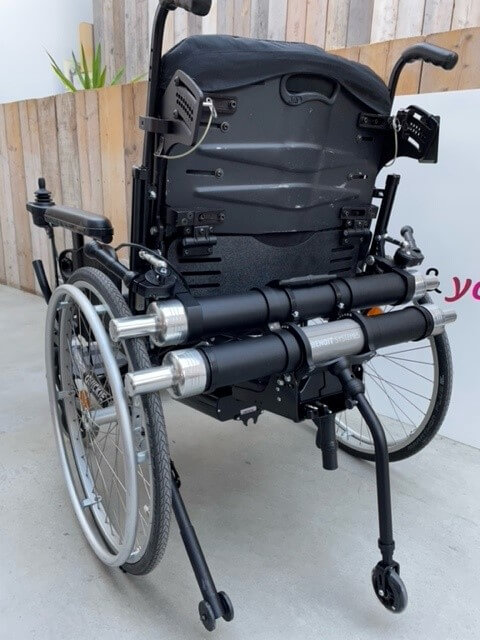Share:
Take it offline!
This Education in Motion resource is also available as a printable PDF.
Download PDF
Bariatric clients are those with a high body weight, most of whom will also have a diagnosis of obesity. Since 1998, obesity has been recognised as a chronic disease. (1) This results when the body is consuming less energy than it is taking in, causing an imbalance that leads to an accumulation of excess adipose (fat) tissue. Body mass index (BMI) calculates the relationship between a person's height and weight. It is often used as a starting point to determine whether someone is obese, although it may not be fully accurate. (2)
Obesity often presents in combination with other health issues. Even though it is highly prevalent, obesity has health implications. For example, obesity is a risk factor in the development of cardiovascular and circulatory problems, respiratory conditions, diabetes, gallstones, osteoarthritis, fertility difficulties and sleep disorders. (3) Additionally, medical conditions that directly, or indirectly, slow the metabolism can lead to obesity. Indirect examples include those that co-occur and limit active movement to maintain a healthy weight, or the effects of mental health needs that impact motivation. Certain medications are also risk factors, such as corticosteroids. (4) Conditions that limit mobility may co-occur with obesity, or the associated fatigue, pain or other complications of obesity may directly necessitate the use of a mobility device.

QUICKIE IBIS XXL
It is then important to start from the functionalities that someone still has, together with the wishes of the client. What can the client do? What does the client want to do? What are the environmental limitations? A list of requirements can then be based on these initial questions. For obese clients, extra care should be taken with the following:
Maximum user weight: What maximum user weight is required? Consider future requirements, particularly for clients with changing needs. The weight of any peripherals (e.g. respirators, other medical equipment, etc.) also counts towards the wheelchair weight limit.
Dimensions: Of course the seat width must be suitable for the client, but how does this affect the total wheelchair width? Can the wheelchair still pass through all of the doorways? When determining the seat depth, take the calves into consideration. These need clearance not to rub on the front of the seat and are impacted by the knee angle. There may need to be some compromises for access, but keep in mind a shorter seat depth can raise overall pressure in the seat and lateral pressure can create a risk of pressure injury, so there may need to be environmental modifications. We have a measurement guide designed specifically for larger (bariatric) clients to make this process easy.
Sitting posture: It can be more challenging to position the pelvis correctly for clients with large soft tissue deposits as bony markers are more difficult to find. Depending on the body shape, there may be a need for a different seat width in relation to the backrest width or the need to find extra support for soft tissue deposits. You also may need to configure the chair to allow space for excess gluteal tissue, whilst maintaining back support. The weight limit of any seating needs to be considered as well for weight capacity and ‘deep contour’ options may be more suitable to maintain proportionality at larger sizes. For example, our JAY Balance Deep Contour has a weight limit of 225kg at sizes of 56cm width and larger.
Taking support: Is it possible for the client to make a transfer or to change position? Will the armrests be used and are they suitable for this? If armrests are used for assistance with standing, dual fixation heavy duty options like those available on the Q700 M HD may be more suitable. Because of abdominal soft tissue deposits, also consider that clients may use armrests to pull themselves forward to reach further, so may benefit from a style that locks securely in the down position.
Propulsion: Manual, with electrically powered support or fully powered? Wheelchair mobility requires that the total weight of the wheelchair and the client be moved. Can the client do this himself or will a carer need to do this? Manual self-propel wheelchairs may be difficult to push due to the higher client weight and more distant wheels relative to the shoulder girdle. Clients with high levels of abdominal and lower limb soft tissue, or oedema in lower limbs will have a more forward internal centre of mass, so the rear axle position (sometimes called ‘centre of gravity’ on an order form) may need to be moved forward on a manual chair. Attendant or user-controlled add-on powered devices can also assist with manual wheelchair propulsion if the user is within the weight capacity. When the client wants to travel independently, a manual wheelchair may not be practical to propel due to over width and the effort of propulsion. To ensure that the client does not become demotivated, a powered wheelchair may be a better option. On a powered wheelchair, the seat may need to be moved rearward to achieve good traction and control, although ensuring enough sitting depth in the seat may resolve this.

It is often possible that an obese client can manage with 'standard' equipment. Some wheelchairs within the Sunrise Medical range are suitable for up to 140 or 160 kg, and the Helix accommodates up to 180 kg. In addition, we have several wheelchairs in our range that are especially suitable for clients with obesity, such as:
- M6 transport wheelchair with a maximum user weight of 295 kg
- Easy 300 manual active wheelchair especially for wider seat widths, maximum user weight 180 kg
- Rubix2 XL, with maximum user weight of 170kg and seat width of up to 60cm
- Ibis, tilting wheelchair, standard suitable for a user weight of 160 kg, with an B4M option suitable for up to 200 kg.
- Quickie Q700 M Sedeo Pro HD, electric wheelchair, maximum user weight 250 kg.